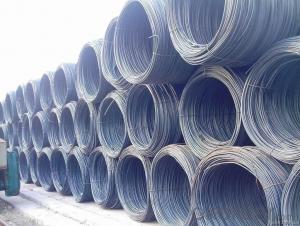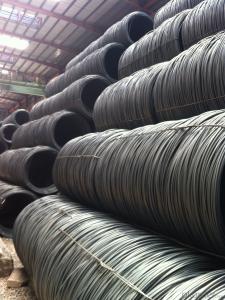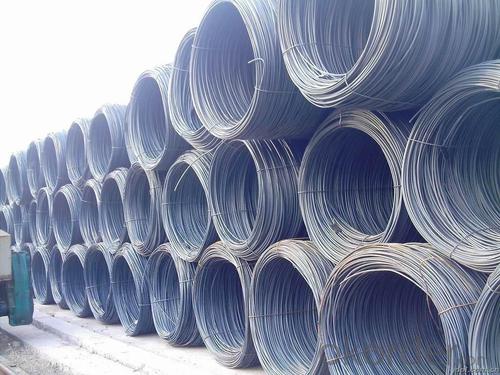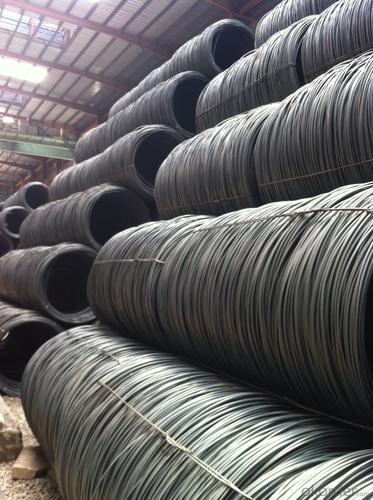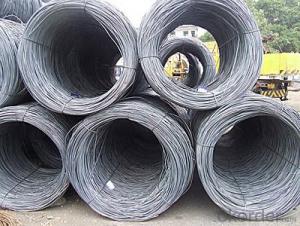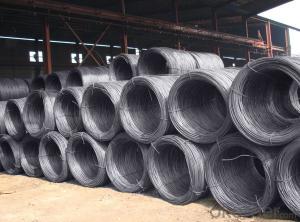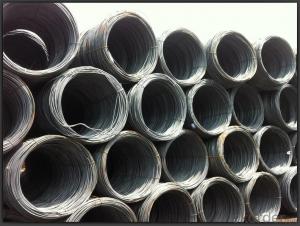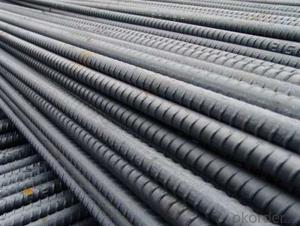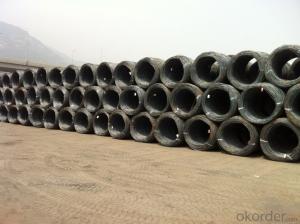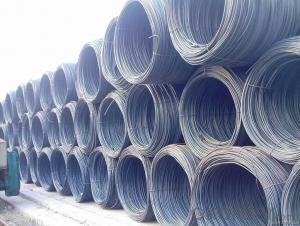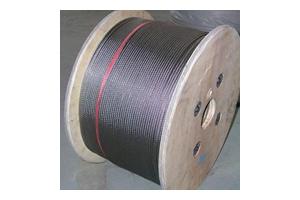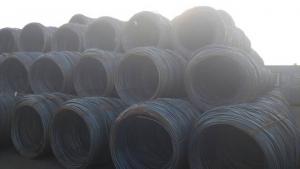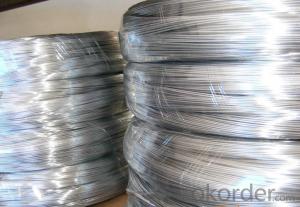Hot Rolled Wire Rods in High Quality and Good Price
- Loading Port:
- Tianjin
- Payment Terms:
- TT OR LC
- Min Order Qty:
- 25 m.t
- Supply Capability:
- 10000 m.t/month
OKorder Service Pledge
OKorder Financial Service
You Might Also Like
OKorder is offering wire rods at great prices with worldwide shipping. Our supplier is a world-class manufacturer of steel, with our products utilized the world over. OKorder annually supplies products to European, North American and Asian markets. We provide quotations within 24 hours of receiving an inquiry and guarantee competitive prices.
Product Applications:
After hot-rolled the products shaped into coil and delivery as finished product, including round, square,rectangular, hexagonal and so on. Since most of the products are round, it is generally called wire rod. Carbon steel wire rod is widely used in construction and manufacturing. Carbon steel wire rod is mainly used for reinforcement of reinforced concrete and welded structure or reprocessed (roberts , nail, etc.) materials, especially used to produce wire drawing, welding electrode, nails, spring, electronic, precise machinery parts and so on.
Product Advantages:
OKorder's Wire rods are durable, strong, and resist corrosion.
Main Product Features:
· Premium quality
· Prompt delivery & seaworthy packing (30 days after receiving deposit)
· Corrosion resistance
· Can be recycled and reused
· Mill test certification
· Professional Service
· Competitive pricing
Product Specifications:
Manufacture: Hot rolled
Grade: SAE1006-SAE1018
Certificates: ISO, SGS, BV, CIQ
Packaging: Export packing, nude packing, in coils
Grade | Chemical Composition (%) | |||||
C | Mn | S | P | Si | B | |
SAE1008B | 0.10max | 0.32max | 0.045max | 0.040max | 0.30max | 0.0008min |
Mechanical properties | ||||||
Yield strength(N/mm2) | Tensile strength(N/mm2) | Elongation (%) | ||||
≥195 | 350-380 | ≥32 | ||||
FAQ:
Q1: How soon can we receive the product after purchase?
A1: Within three days of placing an order, we will begin production. The specific shipping date is dependent upon international and government factors, but is typically 7 to 10 workdays.
Q2: How do we guarantee the quality of our products?
A2: We have established an advanced quality management system which conducts strict quality tests at every step, from raw materials to the final product. At the same time, we provide extensive follow-up service assurances as required.
Q3: Can stainless steel rust?
A3: Stainless does not "rust" as you think of regular steel rusting with a red oxide on the surface that flakes off. If you see red rust it is probably due to some iron particles that have contaminated the surface of the stainless steel and it is these iron particles that are rusting. Look at the source of the rusting and see if you can remove it from the surface.
Images:
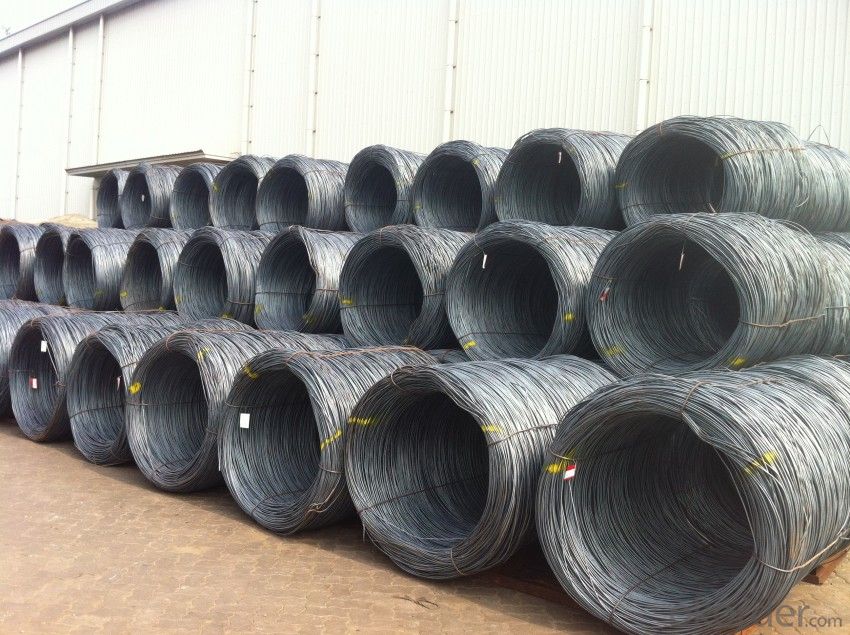
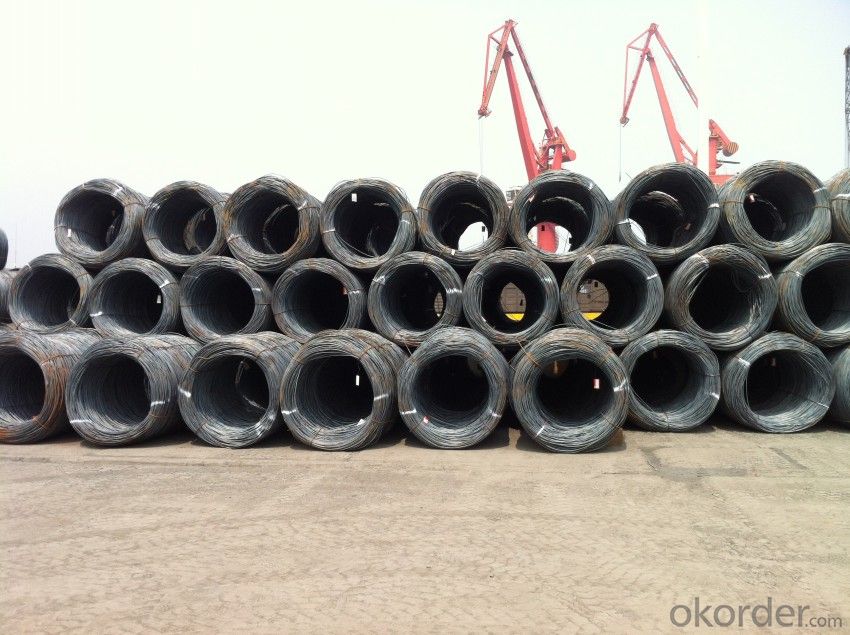
- Q: What are the different types of steel wire rod annealing processes?
- In the industry, multiple steel wire rod annealing processes are utilized to enhance the mechanical properties and overall quality of the steel wire rod. 1. Full Annealing: By subjecting the steel wire rod to high temperatures and gradually cooling it to room temperature, a complete transformation of the steel's microstructure occurs. This leads to improved ductility and toughness. 2. Isothermal Annealing: The steel wire rod is heated to a specific temperature and maintained at that temperature for a specified duration. This ensures the formation of a uniform microstructure throughout the wire rod, resulting in enhanced mechanical properties. 3. Spheroidizing Annealing: Specifically employed for high-carbon steel wire rods, this process involves heating the wire rod just below its melting point and maintaining it at that temperature for an extended period. This enables the formation of small spheroidal carbides within the microstructure, enhancing machinability and formability. 4. Process Annealing: This annealing process alleviates internal stresses and improves the cold-working properties of the steel wire rod. It entails heating the wire rod to a specific temperature and subsequently rapidly cooling it, often using water or air. 5. Normalizing: By heating the steel wire rod slightly above its upper critical temperature and then allowing it to cool in still air, normalizing refines the grain structure of the steel. This results in improved strength and toughness. In summary, these diverse steel wire rod annealing processes are employed to customize the mechanical properties of the steel to meet specific requirements for various applications.
- Q: What are the common applications of pre-stressed and oil tempered steel wire rod?
- Pre-stressed steel wire rod is commonly used in construction and engineering applications, such as for pre-tensioning or post-tensioning of concrete structures, bridges, and high-rise buildings. It helps to improve the load-bearing capacity, durability, and overall structural integrity of these projects. On the other hand, oil tempered steel wire rod is frequently utilized in the manufacturing of springs, suspension systems, and other high-stress applications. Its unique properties, obtained through the tempering process, provide excellent resistance to fatigue and ensure reliable performance in demanding industries such as automotive, aerospace, and machinery.
- Q: What are the common manufacturing defects found in steel wire rod?
- Some common manufacturing defects found in steel wire rods include surface cracks, internal voids or inclusions, improper dimensions or tolerances, and uneven or inconsistent surface finishes. Other defects may include improper metallurgical properties, such as high levels of impurities or inadequate heat treatment, which can weaken the wire rod's strength and durability.
- Q: How is steel wire rod used in the manufacturing of piano wire?
- Steel wire rod is an essential material used in the manufacturing of piano wire due to its strength, durability, and flexibility. Piano wire, also known as music wire, is a high-tensile steel wire that is primarily used in the construction of piano strings but also finds application in various other industries such as aerospace, automotive, and medical. To produce piano wire, steel wire rod is first subjected to a series of manufacturing processes. The rod is cleaned and descaled to remove any impurities or surface contaminants. It is then heated to a specific temperature to improve its malleability and make it easier to work with. Next, the steel wire rod is drawn through a series of dies to gradually reduce its diameter. This process, known as wire drawing, involves pulling the rod through a die with a smaller hole size, which elongates and thins the rod while increasing its strength and tensile properties. This drawing process is repeated multiple times until the desired wire thickness is achieved. Once the desired thickness is obtained, the wire is further heat-treated to enhance its mechanical properties. This heat treatment process, known as patenting, involves heating the wire to a specific temperature and then cooling it rapidly to increase its strength, elasticity, and resistance to deformation. After the patenting process, the wire is carefully inspected for any defects or imperfections. Any flawed wire is discarded to ensure the final product maintains the highest quality standards. The resulting steel wire, now in the form of piano wire, possesses exceptional tensile strength, allowing it to withstand the high tension required for piano strings. Its inherent flexibility enables it to vibrate freely, producing the rich and resonant tones associated with high-quality pianos. In summary, steel wire rod is a critical component in the manufacturing of piano wire due to its strength, durability, and flexibility. Through a series of manufacturing processes such as cleaning, heating, wire drawing, and heat treatment, the wire rod is transformed into a high-tensile steel wire that can withstand the demanding requirements of piano strings.
- Q: What are the main challenges in manufacturing steel wire rod?
- Some of the main challenges in manufacturing steel wire rod include ensuring consistent quality and strength, maintaining a high level of productivity, managing energy consumption and environmental impact, and addressing safety concerns in the production process. Additionally, market fluctuations and competition pose challenges in terms of pricing and meeting customer demands.
- Q: What are the different heat treatment options available for steel wire rod?
- There are several heat treatment options available for steel wire rod, each offering unique properties and characteristics. Some of the common heat treatment methods used for steel wire rod are: 1. Annealing: This process involves heating the steel wire rod to a specific temperature and then slowly cooling it down. Annealing helps in relieving internal stresses, improving machinability, and enhancing the ductility and toughness of the wire rod. 2. Normalizing: In this heat treatment method, the steel wire rod is heated to a temperature above its critical point and then cooled in still air. Normalizing helps to refine the grain structure, improve the mechanical properties, and enhance the overall strength and hardness of the wire rod. 3. Quenching and tempering: This two-step process involves first heating the steel wire rod to a high temperature and then rapidly cooling it in a quenching medium like water or oil. Quenching helps in achieving a high hardness, while tempering involves reheating the wire rod to a specific temperature and then cooling it down slowly. This process helps to reduce the brittleness and increase the toughness and ductility of the wire rod. 4. Case hardening: Also known as carburizing, this heat treatment method involves introducing carbon into the surface layer of the steel wire rod by heating it in a carbon-rich atmosphere. Case hardening provides a hard and wear-resistant outer layer while maintaining a tough and ductile core. 5. Stress relieving: This heat treatment option is used to reduce residual stresses that may have developed during manufacturing processes like cold working or machining. The steel wire rod is heated to a temperature below the critical point and then cooled slowly. Stress relieving helps to improve the dimensional stability and reduce the risk of distortion or cracking. These heat treatment options can be combined or used individually depending on the desired properties and applications of the steel wire rod. It is important to consider factors like the composition of the steel, desired hardness, strength, and other mechanical properties when choosing the appropriate heat treatment method for steel wire rod.
- Q: What are the common traceability requirements for steel wire rod?
- Common traceability requirements for steel wire rod include the need to track the origin and quality of the steel, ensuring compliance with industry standards and specifications. This includes documenting the steel's mill test reports, heat number, and chemical composition, as well as the production process and any subsequent treatments or modifications. Additionally, traceability requirements may involve maintaining records of inspections, testing, and certifications, enabling the identification and resolution of any potential quality issues throughout the supply chain.
- Q: How is steel wire rod used in the production of suspension springs for railway vehicles?
- Steel wire rod is used in the production of suspension springs for railway vehicles as it provides the necessary strength and durability required to withstand the heavy load and constant vibrations experienced during train operations. The wire rod is carefully shaped and coiled to create the suspension springs, which are then installed in the suspension system of railway vehicles to absorb shocks, maintain stability, and ensure a smooth and comfortable ride for passengers.
- Q: What are the common industry regulations for steel wire rod?
- The common industry regulations for steel wire rod typically include standards related to quality, strength, dimensions, and mechanical properties. These regulations may include requirements for chemical composition, surface quality, tolerance limits, and testing methods. Additionally, there may be regulations regarding packaging, labeling, and documentation for the transportation and sale of steel wire rod. Compliance with these regulations ensures the safety and reliability of steel wire rod products in various industries such as construction, automotive, and manufacturing.
- Q: What are the safety requirements for steel wire rod used in elevator wire ropes?
- The safety requirements for steel wire rod used in elevator wire ropes include factors such as the wire's tensile strength, flexibility, fatigue resistance, and corrosion resistance. It should meet industry standards and be able to withstand the weight and stress placed on it during elevator operation. Additionally, the wire rod should be properly tested and certified for its quality and performance to ensure the safety of elevator passengers and operators.
Send your message to us
Hot Rolled Wire Rods in High Quality and Good Price
- Loading Port:
- Tianjin
- Payment Terms:
- TT OR LC
- Min Order Qty:
- 25 m.t
- Supply Capability:
- 10000 m.t/month
OKorder Service Pledge
OKorder Financial Service
Similar products
Hot products
Hot Searches
Related keywords
